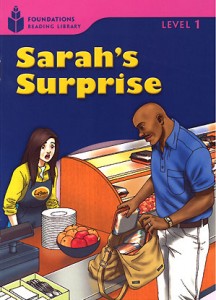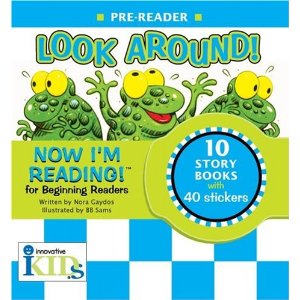curriculum expectations extensive listening extensive reading Language learning online resources personal Thai theory
by sendaiben
leave a comment
Thai (lack of) progress
Okay, so we are now two months into 2012, and my Thai study is going nowhere very slowly.
This has been a very interesting exercise for me, both from a learning point of view, and as a way to test out my theories regarding how best to study a language. Now, it has been very clear to me from observing my students that learning preferences and habits are extremely personal and vary widely among individuals. Some of my students take to internet drills, some like reading, some spend hours writing journals, and some, despite my best efforts, do nothing.
I am definitely not a self-directed learner. I like the idea of input, but at the end of the day I need the structure and encouragement provided by a teacher, a class, or by actually living in a foreign language environment.
Come to think of it, I have done all my language learning under one or more of those conditions. This is the first time for me to try to learn a language on my own, outside of a place where it is spoken. It is not going well.
There are many examples of successful language learners who have succeeded under similar conditions. Khatsumoto for Japanese, or Steve Kaufmann for all sorts of languages. They rely on masses of input, supplemented with judicious use of SRS (spaced repetition system online flashcard applications). I completely agree with the approach, and see great results from those of my students that follow my advice. So what’s my problem?
I have been listening to the Learn Thai Podcast materials, which are pretty good, but in all fairness are nowhere near adequate to take me to Thai language mastery. I need a foundation of basic phrases to provide a base, then a huge amount of input supplemented by the ‘teaching’ in the podcasts, as well as conversation practice/tutoring once I get a bit better.
I have three fairly serious issues I need to overcome first:
1. I can’t read Thai yet. This is a huge hurdle because it is preventing me from getting input through reading (probably the best way to get lots of input fast)
2. I haven’t found good sources for input (radio, videos, music)
3. I haven’t found anyone to help me with Thai or hold me accountable for (not) studying
It’s fairly clear what I need to do. I need to learn Thai phonics and the alphabet. I need to find videos, TV, and music that I like and make sure I spend a chunk of time each day with it. And I am going to need a teacher or class to keep me focused. That last point is particular to me. I tend to get distracted and lose interest in things, so I need an external motivator to help me.
Okay, round two. I’ll keep you posted.
curriculum EFL evaluation expectations extensive listening extensive reading university vocabulary
by sendaiben
leave a comment
The shock of sudden realization…
I was having an imaginary conversation with my boss the other day (something that happens a bit too frequently, perhaps), and had just finished telling him what a ridiculous concept it was to judge the performance, impact, or value of a teacher by the amount of time they spent at work when I had a huge revelation.
That is precisely how I evaluate some of my students!
Particularly for extensive reading, vocabulary study (using online tools such as the Word Engine), and listening, I tend to look at how much time students spent doing an activity, rather than how effectively they did so. The student that spends twenty minutes intensely focused on the task will fare worse than the one who sits there daydreaming for an hour, even though they probably got much more out of it.
In my defense, the main reason for this is that it is fairly difficult to evaluate how effectively someone has, for instance, read something, but it is also down to laziness on my part. Just as it would be ridiculous for my boss to judge my performance solely by how long I spent sitting in my office, I need to start thinking about how to assess my students in a fairer and more accurate way.
Part of it, I suspect, is going to depend on me giving up on being a teacher (look out for a post on this next week!).
How about you? Do you evaluate students based on their presence rather than their engagement?
curriculum EFL eikaiwa ES extensive reading Foundations Reading Library kids language courses Language learning readers Reading Review reviews school management
by sendaiben
4 comments
Foundations Reading Library
Until now I’ve been focusing on phonics and basic readers. Today I’d like to go to the other extreme and look at a series that bridges the gap between children’s readers and ones aimed at older learners.
The Foundations Reading Library, co-authored by my friend Rob Waring, was revolutionary when it came out. A reader series aimed at teenagers, with minimal headword counts that nevertheless succeeded in being interesting and accessible? I don’t know of any others.
Level one starts with just 50 headwords, so normal junior high school students can have a go at getting through the books. For our students who have come up through phonics and children’s readers, these books are cake.
Foundations Reading Library books are available singly, in level packs, and also in collected anthologies. I only just discovered the latter ones, and they seem fairly promising. They have all the books from that level in one volume, cost about half as much as buying them individually, but have the drawback that you can’t give each book to a different student. The covers also seems flimsier and I’m worried about how well they will last. Still, for some teaching situations, they might be a cheap way to stock up.
You can also get CDs and lesson planners for all the levels, but I don’t have much experience with these.
My thoughts:
1. some of the books are better than others, but overall this series is extremely accessible and interesting for students from elementary school all the way to adults. I also use them with university students and they often come out as the most popular series at low level
2. the gaps between levels are very small, making it easy to progress from one to the next
3. the recurring characters are constant through the series and readers can really get to know them
4. there are nowhere near enough books at each level, and unfortunately there won’t be any new ones coming out
Basically, these books still occupy a fairly unique niche, and they do their job extremely well. I wish there were more of them. Some similar alternatives include the Building Blocks Library, by MPI, and the Page Turners series by Cengage, but they aren’t exactly the same…
Anyone else use Foundations? Did I miss anything?
curriculum eikaiwa ES extensive reading kids language courses readers Reading Review reviews Springboard readers teaching
by sendaiben
2 comments
Springboard readers
Springboard readers are an Australian series, and it shows in some of the content (titles include Wally the Wombat, Kakadu, and Ringo the Dingo). Most of the books are pretty generic though.
The series consists of sixteen levels, each with eight books, with a mix of fictional and non-fictional content. The books are not phonics based, but start off very easy and the progression between levels is fairly gentle, so they are a good place for students to start reading more extensively. The books are available various booksellers in Japan, but Amazon does not seem to carry them. Each set of eight books is priced at 2,100 yen, so they are not the cheapest option.
My take:
1. the content is okay, although some stories are better than others
2. the artwork is a mixture of pictures and photographs and is functional
3. there is a wide variety of topics, from stories to factual information
4. the audio for the series is available online, and can be copied by schools
Basically this is a fairly average reader series that does the job. It is not particularly cheap, and the content is functional rather than compelling. However, having the ability to make copies of the CDs for students to take home is a great resource for schools, and elevates the worth of this series considerably. Normally buying the CDs for a reader series raises the cost considerably, but Springboard provides the same functionality for free.
We use these books with JHS students, assigning them one to four books to read at home per week. This is a solid workhorse of a series, and one that is probably worth consideration by schools looking to expand their range of readers or ones looking to provide students with more listening input at home. The sheer range of topics means that students that read all the books get a fairly wide exposure to lots of vocabulary and contexts.
curriculum EFL ES extensive reading kids phonics readers Reading reviews school management teaching
by sendaiben
2 comments
Now I’m Reading phonics readers
Now I’m Reading is a phonics program consisting of five levels of books, from pre-reading to independent. The books come in packs of 10 in a durable and attractive binder. Books can be read as a set or taken out to be read individually. The official website contains lots of information about the series, as well as downloadable activities.
Like Bob Books, this is also a great value option. One set is just over 1300 yen from Amazon.jp, making individual books cost about 130 yen. The production values are better than Bob Books: the binders are excellent and the books are printed in colour on thicker paper. The illustrations are also very attractive.
My take on the books:
1. the books are attractive and appealing to students (I like them too)
2. the pre-reader level (pictured above) makes great mini-story books to read aloud in class (it is not phonically graded)
3. the phonics levels are well-structured, but the stories suffer somewhat from phonics-itis (where the story comes second to the phonics target, resulting in awkward or boring stories)
4. great value
5. easy for students to read individually in class or take home for homework
On the whole, I am quite a fan. While they are not as good as Jelly and Bean (mainly because of how the phonics stories are constructed), they are much cheaper and clearly better than similar products in the same price range. If nothing else I really recommend the pre-reader level as really cheap story books.
Has anyone else used Now I’m Reading?




